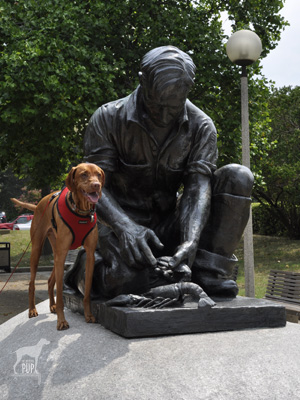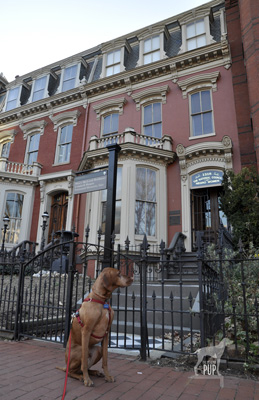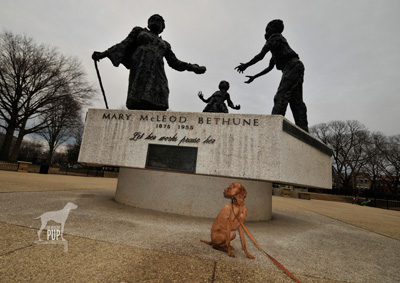 Every year National Lobster Day is celebrated by foodies across America on June 15. While the origins of this “holiday” remain as murky as the waters in which lobsters thrive, there’s no doubting that the observance makes for a great excuse to don a bib and indulge in fresh lobster and drawn butter!
Every year National Lobster Day is celebrated by foodies across America on June 15. While the origins of this “holiday” remain as murky as the waters in which lobsters thrive, there’s no doubting that the observance makes for a great excuse to don a bib and indulge in fresh lobster and drawn butter!
Being from Maine, the Intrepid Pup has seen his share of lobster boats, traps, and buoys. The Maine Lobstermen’s Association—the largest commercial fishing industry group on the east coast, representing the interests of more than 1,200 lobstermen—is even headquartered in what was once his home community! So when Team Tavish learned that the nation’s capital contains a lobster statue, we knew this was a destination for the Intrepid Pup!
The Maine Lobsterman Statue is relatively inconspicuous in its marina location along Washington, DC’s Anacostia Riverfront, in very close proximity to Arena Stage and the nation’s oldest United States Marine Corps Barracks. The statue was originally created by Portland, Maine, sculptor Victor Kahill as the centerpiece of Maine’s section in the Hall of States at the 1939 World’s Fair. Over time, four bronze castings have been made: 3 for locations in Maine and one for Washington, DC. The model for the sculpture was a genuine Maine lobsterman, H. Elroy Johnson of Bailey Island, who expressed regret that his faithful dog Bruin had not been incorporated into the final piece. Since Bruin’s puppyhood, he had only ever missed five days of accompanying his master to haul traps. Talk about intrepid! At the Fair’s unveiling of the sculpture, Bruin—who was said to be unerring in his ability to distinguish “shorts” from “counters” (e.g. non-regulation vs. regulation size lobsters)—was issued an official lobster license by the Commissioner of Sea and Shore Fisheries.
On the morning of the Intrepid Pup’s visit to the statue, few others were out along the waterfront promenade. However, we did encounter two women sitting on a park bench talking as their dogs played in the grass. It turns out that they lived in the nearby condominium complex and were very familiar with the lobsterman statue. The one lady remarked that the man in the sculpture bears a striking resemblance to a young Abraham Lincoln (and he does!) and therefore always refers to the statue as “Lincoln Freeing the Lobsters”!
Dogging the Details
38°52′32.01″ N, 77°1′16.55″ W
Maine Lobsterman Statue, Washington, DC
 The statue earns a 2 on the Wag-A-Meter both for its ease in experiencing and also for its interesting canine backstory!
The statue earns a 2 on the Wag-A-Meter both for its ease in experiencing and also for its interesting canine backstory!
While there is ample parking nearby, actually snagging a space can be a trick, especially during nice weather and busy weekends, because the area fills up with marina personnel, boat owners and people going to the nearby seafood restaurants. Fortunately, DC is very walkable, and if you’re up for a longer stroll with your dog, this Southwest DC location is accessible from the L’Enfant Plaza area and even the Jefferson Memorial area.












